11 July 2024 : Daily Current Affairs
1. Russia, India agree to go ahead with trade in national currency: diplomat
- 1. Russia, India agree to go ahead with trade in national currency: diplomat
- 2. Why is India drilling a 6-km deep hole in Maharashtra?
- 3. The case for a caste Census
- 4. Supreme Court Affirms Right of Divorced Muslim Women to Seek Maintenance Under CrPC
- 5. Preventive Detention of Activists Highlights Controversy Over Upper Siang Hydropower Project in Arunachal Pradesh
- 6. National Gopal Ratna Award -2024
- 7. Floral Waste is boosting circularity in economy
- Prelims Facts
- 1. Saving the ‘stars’
- 2. Iron ore exports rise despite fall in Chinese demand
- 3. Bengaluru Firm Sets New World Record with High-Altitude UAV Test at Umling La Pass
- 4. AIIMS Develops Blood Test for Early Alzheimer’s Diagnosis
- 5. India-Russia Oil Trade Surges Amid Ukraine Conflict, Saving India $10.5 Billion
(Source – The Hindu, International Edition – Page No. – 5)
| Topic: GS2 – International Relations – Bilateral Relations |
| Context |
|
Analysis of the news:
- India and Russia have decided to establish a national currency settlement system, according to Roman Babushkin, Chargé d’Affaires of the Russian Embassy.
- Prime Minister Narendra Modi’s recent visit to Russia was termed “historic and game-changing.”
- Babushkin criticised Western support for Ukraine and described the peace conference in Switzerland as a “tamasha” (charade).
- Russia’s friendship with China should not concern India, according to Babushkin.
- Russia is the fourth largest trading partner of India, with significant growth in trade, particularly in energy, after Western sanctions on Russia.
- Modi and Putin’s discussions focused on economic cooperation and the issue of Indian nationals fraudulently inducted into the Russian army.
- Babushkin assured that the Indian nationals would be sent back soon and emphasised that Russia never wanted Indians in its army.
- He described the Modi-Putin meeting as a globally significant event and emphasised Russia’s desire for peace in Ukraine.
- Babushkin criticised Western powers for supporting Ukraine and highlighted the emergence of new independent power centres like India and Russia.
| Practice Question: Discuss the significance of India and Russia establishing a national currency settlement system and its potential impact on bilateral trade and geopolitical relations. (150 Words /10 marks) |
2. Why is India drilling a 6-km deep hole in Maharashtra?
(Source – The Hindu, International Edition – Page No. – 7)
| Topic: GS1 – Geography |
| Context |
|
Introduction
- Earthquakes remain unpredictable, especially those occurring within tectonic plates. Minor earthquakes in unexpected sites pose significant risks to populated areas.
- Scientific deep drilling is essential for understanding earthquakes and the earth’s deeper layers.
What is Scientific Deep Drilling?
- Scientific deep drilling involves creating boreholes to study deeper parts of the earth’s crust.
- It helps analyse geological formations, energy resources, life forms, and climate change patterns.
- In India, the Borehole Geophysics Research Laboratory (BGRL) oversees the deep-drilling program, focusing on the Koyna-Warna region in Maharashtra, which has frequent earthquakes linked to the Koyna Dam.
Benefits of Deep-Drilling Missions
- Surface-level observations are insufficient for studying earthquakes.
- Drilled boreholes provide direct, in situ experiments and monitor fault lines and seismic activity.
- They offer fundamental knowledge of the earth’s crust, aiding in understanding geohazards and geo-resources.
- Deep drilling also fosters technological innovations in seismology and related fields.
Challenges of Scientific Deep Drilling
- Scientific deep drilling is labour- and capital-intensive due to the harsh conditions of the earth’s interior.
- Maintaining boreholes and ensuring the integrity of collected samples are technically demanding.
- Troubleshooting issues at great depths is complicated, and equipment can get stuck or damaged.
- Human resources are another challenge, requiring highly skilled personnel for extended periods.
The Drilling Technique
- The Koyna pilot borehole uses a combination of mud rotary drilling and air hammering.
- Rotary drilling involves a steel rod with a diamond-embedded drill bit, cooled by drilling mud.
- Air hammering uses compressed air to deepen the borehole and flush out cuttings.
- Decisions on drilling techniques are dynamic, based on rock type and conditions encountered.
Findings from the Pilot Drilling Mission
- The mission revealed a 1.2-kilometer thick layer of 65-million-year-old Deccan trap lava flows and 2,500-2,700-million-year-old granitic rocks.
- Measurements provided new information on rock properties, fluid compositions, temperature, stress regimes, and fracture orientations.
- High-resolution images of the borehole wall were captured for data validation.
- Experiments measured rock stress regimes, providing insights into recurrent earthquakes.
Key Discoveries
- Presence of water down to 3 kilometres, indicating deep percolation and circulation.
- The Koyna region is critically stressed, making it prone to frequent, small-magnitude earthquakes.
Future Prospects
- Data from the pilot will guide future drilling missions.
- Expected temperatures at 6 kilometres depth are 110-130 degrees Celsius, necessitating specially designed equipment and sensors.
- Over 20 research groups are studying Koyna samples for various applications, including understanding rock properties and microbes in extreme conditions.
- The Koyna project is laying the groundwork for future scientific deep-drilling efforts in India and contributing to global geological research.
| PYQ: Discuss about the vulnerability of India to earthquake related hazards. Give examples including the salient features of major disasters caused by earthquakes in different parts of India during the last three decades. (150 words/10m) (UPSC CSE (M) GS-3 2021) |
| Practice Question: Discuss the significance of scientific deep drilling in understanding earthquake mechanisms and the earth’s geological structure, with reference to India’s Borehole Geophysics Research Laboratory initiatives. (150 Words /10 marks) |
3. The case for a caste Census
(Source – The Hindu, International Edition – Page No. – 10)
| Topic: GS2 – Governance |
| Context |
|
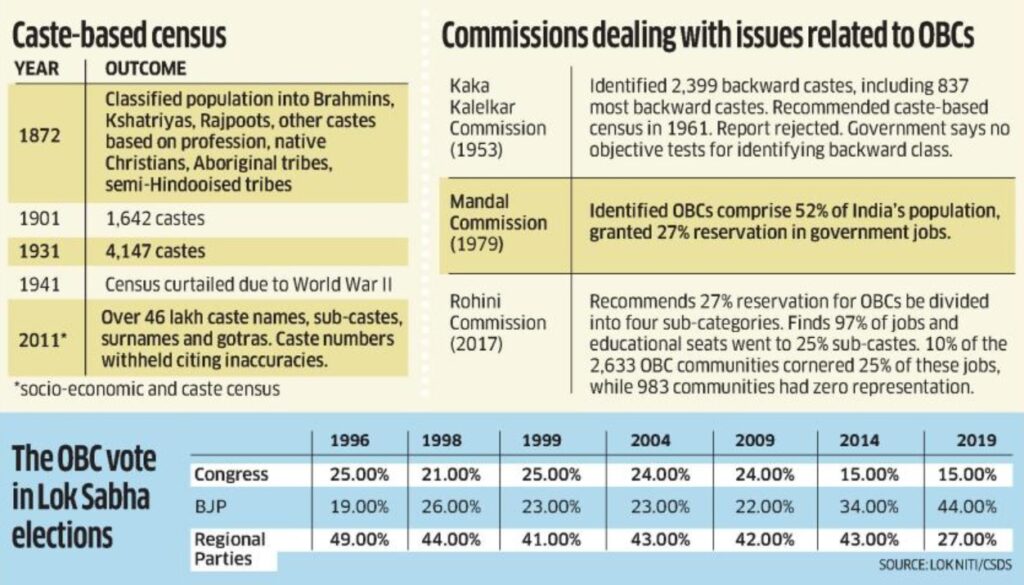
Introduction
- Collecting data on historically discriminated groups based on caste, race, religion, gender, disability, etc., is crucial for informed policymaking and inclusive development.
- This practice is not identity politics but essential for addressing issues faced by these groups.
Reasons for a Caste Census in India
Social Imperative
- Caste remains a significant social construct in India, affecting marriage, surnames, residential segregation, and political choices.
- Inter-caste marriages were only about 5% as of 2011-12.
Legal Imperative
- Constitutionally-mandated social justice policies require detailed caste-wise data.
- Supreme Court rulings have recognized caste as a relevant criterion for defining backward classes and supporting reservation policies.
Administrative Imperative
- Detailed data is needed to avoid wrongful inclusions/exclusions and ensure fair distribution within reserved categories.
- It helps in sub-categorizing castes and determining criteria for the creamy layer.
Moral Imperative
- Lack of detailed data benefits a few elites who monopolise resources and power.
- A caste census would address this inequity.
Historical Context
Censuses in British and Post-Independence India
- Censuses between 1881 and 1931 included all castes.
- Post-Independence, the 1951 Census excluded caste except for Scheduled Castes (SCs) and Scheduled Tribes (STs), which have been enumerated since.
Arguments Against a Caste Census
Social Division
- Critics argue it is socially divisive, but social divisions predate censuses by thousands of years.
- Religion, language, and region are also enumerated without causing conflict, making this argument weak.
Administrative Complexity
- Enumerating caste is seen as an administrative challenge.
- However, the government has successfully enumerated SCs and STs, suggesting it can manage additional castes.
Demand for Increased Reservations
- Critics fear it will fuel demands for more reservations.
- Accurate data would actually help in making objective decisions about reservations, preventing arbitrary policies.
Case for OBC Specific Data in Census
Constitutional Provisions
- The Constitution allows for OBC reservations in education and public employment.
- Supreme Court rulings have emphasised the need for up-to-date caste data for OBC reservations.
Local Body Elections
- OBC reservations in local body elections require caste-wise data, which has been demanded by the judiciary but not provided by the executive.
EWS Reservation
- The Supreme Court upheld EWS reservations without empirical data, highlighting the inconsistency in the approach towards OBC data.
Need for Accurate Enumeration
Failed Attempt: SECC-2011
- The SECC-2011 was poorly designed and executed, leading to unreliable data.
- It was not conducted under the Census Act, 1948, and lacked proper sociological/anthropological expertise.
Successful State Surveys
- State-specific surveys, like those in Karnataka and Bihar, have provided more accurate results by using pre-defined caste lists.
Recommendations
Amending the Census Act
- The Census Act, 1948, should be amended to mandate caste enumeration.
- Sociological and anthropological experts should be involved in creating state-specific caste lists.
Public Consultation and Technological Aid
- Draft lists should be published online for public feedback before finalising.
- Internet-enabled devices with preloaded data should be used to simplify the enumeration process.
Judicial Review
- States should challenge the 2021 Supreme Court judgement to ensure accurate OBC data collection.
- The next Census must include caste enumeration to implement fair and informed policies.
| PYQ: Has caste lost its relevance in understanding the multi-cultural Indian Society? Elaborate your answer with illustrations. (150 words/10m) (UPSC CSE (M) GS-1 2020) |
| Practice Question: Discuss the significance of conducting a caste census in India for ensuring effective implementation of social justice policies. Highlight the challenges and arguments against its enumeration. (150 Words /10 marks) |
4. Supreme Court Affirms Right of Divorced Muslim Women to Seek Maintenance Under CrPC
(Source: Indian Express; Section: Explained; Page: 13)
| Topic: GS2 – Polity GS2 – Social Justice |
| Context: |
|
Analysis of News:
Section 125 CrPC and Constitutional Philosophy
- Section 125 CrPC mandates that any person with sufficient means must maintain their wife or legitimate/illegitimate minor child if they are unable to maintain themselves.
- The explanation within the section clarifies that “wife” includes a divorced woman who has not remarried.
- Justice Nagarathna emphasized that Section 125 is embedded in the Constitution’s social justice philosophy, providing critical support for destitute and deprived women.
- This provision aligns with Article 15(3) and Article 39(e) of the Constitution, which advocate for special provisions for women and prevent economic exploitation.
Maintenance Provisions Under CrPC and MWPRD Act
- The ruling reiterated that maintenance under Section 125 CrPC exists in addition to, not against, the provisions of the Muslim Women (Protection of Rights on Divorce) Act, 1986 (MWPRD Act).
- The court noted that Parliament did not create any bar for a divorced Muslim woman from claiming maintenance under Section 125 of the CrPC.
- This position was first established in the landmark 2001 ruling in Danial Latifi & Anr v. Union of India.
The Shah Bano Case and its Aftermath
- In 1978, Shah Bano Begum filed a petition seeking maintenance from her husband under Section 125 CrPC.
- Her husband divorced her via ‘irrevocable talaq’ and argued that he was only required to provide maintenance during the iddat period (three months after divorce).
- The Madhya Pradesh High Court granted Shah Bano’s plea, and the Supreme Court upheld this decision, stating that Section 125 CrPC applies regardless of religion and extends maintenance beyond the iddat period if the woman cannot maintain herself.
- The government of Prime Minister Rajiv Gandhi then enacted the MWPRD Act, which shifted the obligation of maintenance after the iddat period to the relatives or children of the divorced wife and, in their absence, to the State Wakf Board.
Challenge to the 1986 Act and Supreme Court Interpretation
- The constitutionality of the MWPRD Act was challenged by Shah Bano’s lawyer, Danial Latifi, arguing that Section 125 CrPC protects women of all religions from destitution and that the MWPRD Act discriminates against Muslim women, violating Articles 14 and 21 of the Constitution.
- The Supreme Court upheld the constitutionality of the MWPRD Act while creatively interpreting Section 3(a) to mean that the husband must make reasonable and fair provision for the divorced wife’s future needs within the iddat period, but actual payments could extend beyond this period unless she remarries.
Conclusion and Implications
- The Supreme Court’s ruling confirms that a divorced Muslim woman can seek maintenance under Section 125 CrPC, reinforcing the secular nature of the law and its alignment with constitutional principles of social justice.
- This decision highlights the importance of providing economic support to divorced women, ensuring their dignity and protection from destitution, and underscores the enduring relevance of the Shah Bano precedent in safeguarding women’s rights.
| PYQ: Customs and traditions suppress reason leading to obscurantism. Do you agree? (250 words/15m) (UPSC CSE (M) GS-1 2020) |
| Practice Question: Discuss the significance of the Supreme Court’s ruling that allows divorced Muslim women to seek maintenance under Section 125 of the Code of Criminal Procedure (CrPC). How does this ruling align with the principles of social justice and the constitutional rights of women in India? Analyze the impact of this decision on the interpretation of personal laws and secular legislation in the country. (250 words/15 m) |
5. Preventive Detention of Activists Highlights Controversy Over Upper Siang Hydropower Project in Arunachal Pradesh
(Source: Indian Express; Section: Explained; Page: 13)
| Topic: GS1 – Geography |
| Context: |
|
Analysis of News:
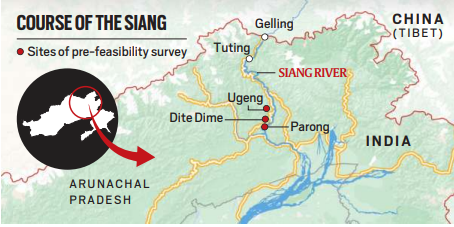
The Upper Siang Project
- The Upper Siang project is a proposed 11,000-megawatt hydropower project on the Siang River in Arunachal Pradesh’s Upper Siang district.
- Originating near Mount Kailash in Tibet, the Siang River flows through Arunachal Pradesh and further downstream becomes the Brahmaputra in Assam.
- The project, to be constructed by the National Hydroelectric Power Corporation (NHPC), entails building a 300-meter high dam, the largest in the subcontinent.
- It replaces two previously planned projects with a combined capacity of 9,250 MW, with a single project of higher capacity.
Strategic Importance
- The dam is considered a strategic imperative to counter China’s hydropower projects on the Tsangpo River.
- Chinese plans for a 60,000 MW ‘super dam’ in Tibet’s Medog County, near the border with Arunachal Pradesh, have heightened concerns.
- This Chinese project aims to divert water to China’s northern regions.
- Indian officials believe the Upper Siang project will serve as a reservoir to mitigate the effects of reduced water flow from China.
Environmental and Social Concerns
- Anti-dam organizations have voiced significant environmental and social concerns about the Upper Siang project.
- They argue that the dam threatens delicate ecosystems, wildlife habitats, and biodiversity in the region.
- Activists are also concerned about the displacement of communities, particularly the Adi tribe, with more than 300 villages potentially submerged.
- They stress the importance of preserving their ancestral lands and the adverse impact the project would have on their traditional way of life.
Conclusion
- The preventive detention of activists highlights the tension between development projects and local resistance in Arunachal Pradesh.
- While the Upper Siang project is seen as a strategic necessity by the government, it poses significant environmental and social challenges.
- The ongoing resistance reflects deep-rooted concerns about the project’s impact on local communities and ecosystems.
- As authorities push forward, balancing development with the rights and concerns of the affected populations remains a critical challenge.
| About Siang/Brahmaputra river: |
|
| Practice Question: Discuss the controversy surrounding the Upper Siang Hydropower Project in Arunachal Pradesh, focusing on its environmental and social implications. How does this project intersect with national security concerns, and what are the implications for local communities and environmental sustainability? (250 words/15 m) |
6. National Gopal Ratna Award -2024
(Source – https://pib.gov.in/PressReleseDetail.aspx?PRID=2032146 )
| Topic: GS2 – Governance |
| Context |
|
Analysis of the news:
- Objective: The National Gopal Ratna Award (NGRA) aims to recognize and encourage excellence in the dairy sector, focusing on indigenous cattle and buffalo breeds.
- Initiative: Launched under the Rashtriya Gokul Mission, the award is administered by the Department of Animal Husbandry and Dairying, Ministry of Fisheries, Animal Husbandry and Dairying.
- Categories: Awards are given annually in three categories:
- Best Dairy Farmer rearing indigenous cattle/buffalo breeds.
- Best Dairy Cooperative Society (DCS)/Milk Producer Company (MPC)/Dairy Farmer Producer Organization (FPO).
- Best Artificial Insemination Technician (AIT).
- Special Focus: From 2021 onwards, a special award is included for the North Eastern Region (NER) states to promote dairy development in the region.
- Recognition: Winners receive:
- Cash prizes: Rs. 5,00,000 (1st rank), Rs. 3,00,000 (2nd rank), Rs. 2,00,000 (3rd rank), and Rs. 2,00,000 (Special Award for NER).
- Certificate of merit and a memento.
7. Floral Waste is boosting circularity in economy
(Source – https://pib.gov.in/PressReleseDetail.aspx?PRID=2032112 )
| Topic: GS3 – Indian Economy |
| Context |
|
| What is Circular Economy? |
|
Circular Economy for India:
Need:
- Resource Efficiency: Minimise resource use and waste generation.
- Environmental Benefits: Reduce carbon footprint and pollution.
- Economic Growth: Foster innovation, create jobs, and enhance competitiveness.
- Sustainability: Ensure long-term viability of resources and industries.
Challenges:
- Awareness and Mindset: Lack of awareness and reluctance to change traditional practices.
- Infrastructure: Insufficient facilities for recycling and waste management.
- Policy and Regulation: Inconsistent policies and regulatory frameworks.
- Financing: Limited investment in circular economy projects.
- Behavioural Change: Resistance to adopting sustainable practices.
Way Forward:
- Policy Support: Develop comprehensive policies promoting circular practices.
- Education and Awareness: Educate public and businesses on benefits and practices.
- Infrastructure Development: Invest in recycling facilities and waste management infrastructure.
- Innovation: Support research and development for circular solutions.
- Collaboration: Foster partnerships between government, industry, and communities.
- Incentives: Provide incentives for businesses adopting circular practices.
Some notable case studies:
HolyWaste (Hyderabad):
- Process: ‘Florjuvination’ converts floral waste into eco-friendly products like fertilisers, incense sticks, scented cones, and soaps.
- Collection: Partners with 40 temples, 2 flower vendors, and a market area, preventing 1,000 kgs/week from landfills or water bodies.
Phool (Kanpur):
- Activity: Collects 21 MT of floral waste weekly (3 TPD) from temples in Ayodhya, Varanasi, Bodh Gaya, Kanpur, and Badrinath.
- Focus: Addresses temple-waste problem through daily collection, transforming waste into incense sticks and organic products.
Adiv Pure Nature (Mumbai):
- Initiative: Transforms temple floral waste into natural dyes for textiles like fabric, garments, scarves, and tote bags.
- Collection: Handles 1,000-1,500 kg/week of floral waste, utilising flowers and coconut husks for sustainable dye production.
Tirupati Municipal Corporation:
- Activity: Manages 6 tons/day of floral waste from temples.
- Impact: Employs 150 women from self-help groups, upcycling waste at a 15-ton capacity manufacturing plant to produce reusable products.
| PYQ: Define the concept of carrying capacity of an ecosystem as relevant to an environment. Explain how understanding this concept is vital while planning for sustainable development of a region. (250 words/15m) (UPSC CSE (M) GS-3 2019) |
| Practice Question: Discuss the significance of implementing a circular economy model in India’s sustainable development agenda. How can policies promoting resource efficiency and waste reduction contribute to economic growth and environmental sustainability? (250 Words /15 marks) |
Prelims Facts
1. Saving the ‘stars’
(Source – The Hindu, International Edition – Page No. – 14)
| Context |
|
Indian Star Tortoises:
- Scientific Name: Geochelone elegans
- IUCN Status: Listed as Vulnerable on the IUCN Red List due to habitat loss, poaching for pet trade, and illegal trafficking.
- Appearance: Small to medium-sized tortoise with a distinctive star-shaped pattern on its carapace.
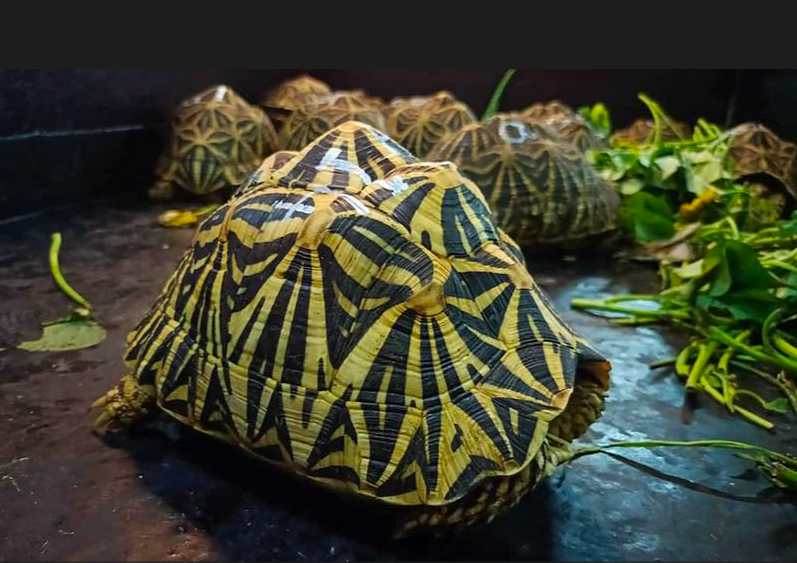
- Distribution: Found in India, primarily in dry and arid regions of southern and western India.
- Habitat: Prefers scrub forests, grasslands, and semi-desert areas with sandy soils.
- Diet: Herbivorous, feeding on various plant materials including grasses, leaves, and fruits.
- Behaviour: Primarily terrestrial but can swim and may soak in water bodies to regulate body temperature.
- Reproduction: Females lay small clutches of eggs, typically in sandy or loamy soil, with incubation lasting several months.
- Legal Protection: Protected under Indian law with international trade regulated by CITES (Appendix II).
2. Iron ore exports rise despite fall in Chinese demand
(Source – The Hindu, International Edition – Page No. – 13)
| Context |
|
Analysis of the news:
- India’s iron ore exports in Q1 FY25 rose by nearly 5% year-on-year to 10.25 million tonnes (MT).
- Despite reduced demand from China, which historically accounts for 80% of Indian iron ore exports, shipments to China fell by 10% year-on-year.
- Indian exporters diversified to smaller markets like Indonesia and Malaysia to offset declining Chinese demand.
- China’s demand for Indian iron ore has been volatile, with shipments peaking during the COVID years but stabilising around 80% post-pandemic.
- April saw 2.11 MT exported to China, rising to 3.75 MT in May, but dropping to 2.45 MT in June, reflecting fluctuating demand trends.
- The future of Indian iron ore exports remains uncertain due to ongoing economic conditions in China impacting long-term demand prospects.
3. Bengaluru Firm Sets New World Record with High-Altitude UAV Test at Umling La Pass
(Source: Indian Express; Section: Express Network; Page: 12)
| Context: |
|
About Umling LA Pass:
- Currently, Umling La in Ladakh, at a height of 19,024 ft, holds the record of being the highest motorable road in the world.
- The construction of this road has been achieved by the BRO (Border Road Organization) as part of “Project Himank”.
- It is a 52-km road that connects Chishumle to Demchok villages. Both these villages lie in close proximity to the Line of Actual Control (LAC), and a friction point between India and China.
4. AIIMS Develops Blood Test for Early Alzheimer’s Diagnosis
(Source: Indian Express; Section: Cover Page; Page: 01)
| Context: |
|
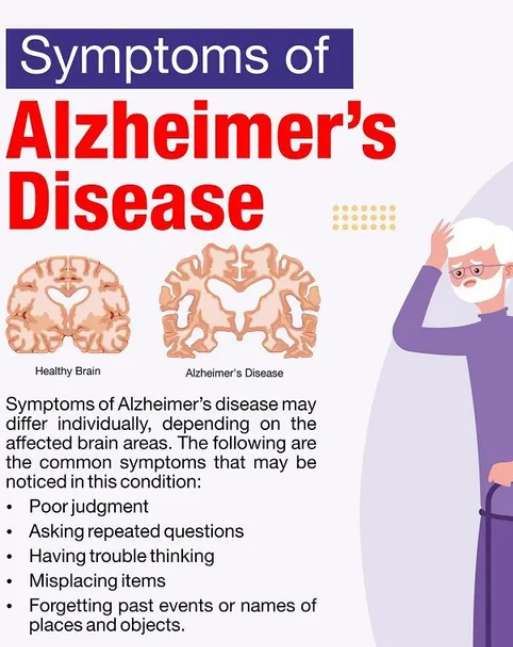
Analysis of News:
About Alzheimer’s Disease
- It is a brain condition that causes a progressive decline in memory, thinking, learning, and organizing skills.
- It is the most common type of dementia, accounting for 60-80% of all dementia cases.
- It involves parts of the brain that control thought, memory, and language.
- It can seriously affect a person’s ability to carry out daily activities.
- The condition usually affects people aged 65 years and over, with only 10% of cases occurring in people younger than this.
Cause:
- The exact cause of Alzheimer’s disease is not fully understood, but it is believed to be influenced by a combination of genetic, environmental, and lifestyle factors.
Symptoms:
- The early signs of the disease include forgetting recent events or conversations.
- Over time, it progresses to serious memory problems and loss of the ability to perform everyday tasks.
- Treatment: There’s no cure for Alzheimer’s, but certain medications and therapies can help manage symptoms temporarily.
Early Detection and Lifestyle Intervention
- The AIIMS blood test has the potential to detect biomarkers at least 10 to 15 years before the disease becomes full-blown, allowing doctors to slow its progression.
- Early detection can lead to treatments that manage symptoms and encourage lifestyle changes in mid-adult life, such as diet, exercise, and managing existing comorbidities. The goal is to preserve the patient’s level of function longer.
- Experts emphasized that while there is no cure for Alzheimer’s, early detection could enable patients to halt degeneration with a healthier lifestyle.
5. India-Russia Oil Trade Surges Amid Ukraine Conflict, Saving India $10.5 Billion
(Source: Indian Express; Section: Economy; Page: 15)
| Context: |
|
Analysis of News:
Economic Impact and Savings
- An analysis of India’s official trade data by The Indian Express reveals that Indian refiners likely saved at least $10.5 billion in foreign exchange from April 2022 to May 2024 by increasing purchases of discounted Russian crude oil.
- With Western buyers cutting oil imports from Russia following its invasion of Ukraine in February 2022, Moscow began offering discounts on its crude. Indian refiners capitalized on these discounted barrels, leading Russia to become India’s biggest oil supplier, surpassing traditional suppliers like Iraq and Saudi Arabia.
- This burgeoning oil trade has also elevated Russia into the ranks of India’s top trade partners.
Diplomatic Challenges and Justifications
- India has had to navigate diplomatic challenges due to the surge in oil imports from Russia.
- Some Western voices initially criticized New Delhi, alleging that purchasing Russian oil was helping Moscow finance its war in Ukraine.
- In response, India has emphasized its energy security and affordability priorities, given its status as the world’s third-largest consumer of crude oil with an import dependency level of over 85 percent.
- Indian officials have argued that buying more Russian oil helped rebalance the global oil market and kept prices in check, a stance reiterated by Modi’s recent comments in Moscow.


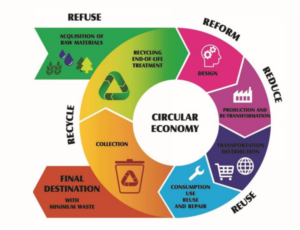 Circular Economy is an economic model aimed at minimising waste and making the most of resources.
Circular Economy is an economic model aimed at minimising waste and making the most of resources.